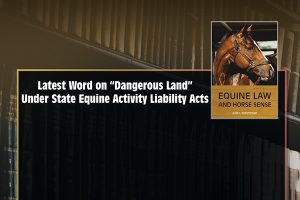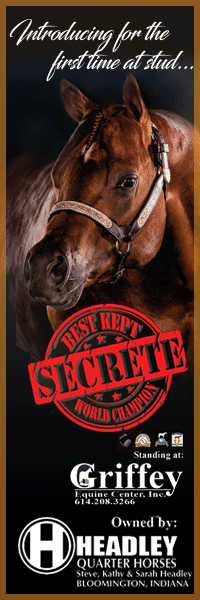Latest Word On “Dangerous Land” Under State Equine Activity Liability Acts
Click here to read the complete article
224 – March/April, 2023
 By Julie I. Fershtman, Attorney at Law www.equinelaw.net
By Julie I. Fershtman, Attorney at Law www.equinelaw.net
In the 33 years since the first state equine activity liability act was signed into law, courts nationwide have grappled with the meaning of these laws–especially the laws’ exceptions. Exceptions in the laws are important as they could potentially allow lawsuits to proceed. Although all of the equine activity liability acts (referred to as “EALAs”) differ, many share common characteristics. Several EALAs include an exception for a “dangerous latent condition of the land.” This article explores how the exception has been faring in the courts.
The “Dangerous Latent Condition of the Land” Exception
Michigan’s EALA, for example, states that despite provisions in the law that can prevent lawsuits, an equine activity sponsor, equine professional, or another person might still be liable for an
equine-related injury if the person or business:
Owns, leases, rents, has authorized use of, or otherwise is in lawful possession and control of land or facilities on which the participant sustained injury because of a dangerous latent condition of the land or facilities that is known to the equine activity sponsor, equine professional, or other person and for which warning signs are not conspicuously posted.
The term “latent” means that the condition’s presence is not apparent or visible.
When people have been hurt while riding, handling or near horses or when they are hurt at equine facilities, what conditions do they claim to be “dangerous latent conditions”?
Court Finding a “Dangerous Latent Condition”
Click here to read the complete article
224 – March/April, 2023










